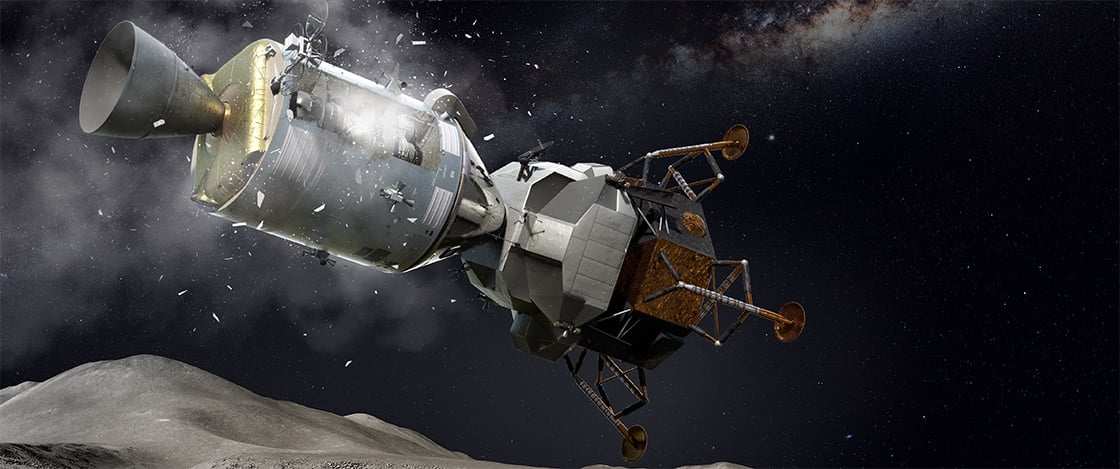Contest
Students write a news article explaining what went wrong with Apollo 13 and how the astronauts got back safely, using details from the story.

The incredible true story of three astronauts fighting for survival 240,000 miles from Earth
Learning Objective: Students will learn how an explosion damaged the Apollo 13 spacecraft in 1970 and how the astronauts got home. The story will introduce domain-specific vocabulary and problem-and-solution structures.
For further context, explain to students that in the time of Apollo 13, astronauts were exclusively white men. Towards the end of the 1970s, people of color and women started to join NASA.
Along these lines, read aloud Hidden Figures: The True Story of Four Black Women and the Space Race, the kids’ version of the story about the women who played an integral role in NASA’s history.
Our contest prize is a book by Tod Olson called Lost in Outer Space. Tod is a writer for Storyworks Jr. Check out his story “Volcano of Doom” in our March/April issue—and have your students practice their writing by entering our contest!
Do your students know that many animals—including mice and monkeys—have been launched into space? Show them this infographic!
To see the world from an astronaut’s point of view, check out these beautiful photos from astronaut Scott Kelly.
The space center in Houston is just one of several NASA space centers and research facilities throughout the U.S. Show your students this map, which links to sites for each facility.
More About the Article
Content-Area Connections
social studies: U.S. history
science: space exploration, engineering, astronomy
social-emotional learning: self-management, responsible decision-making
Key Skills
problem and solution, cause and effect, key details, drawing conclusions, text features, inference, vocabulary
1. PREPARING TO READ
Watch a Video/Preview Text Features (25 minutes)
Introduce Domain-Specific Vocabulary (15 minutes, activity sheet online)
Set a Purpose for Reading (5 minutes)
2. CLOSE READING
Reading and Unpacking the Text
Close-Reading Questions (30 minutes)
Critical-Thinking Question (10 minutes)
3. SKILL BUILDING
Distribute our Problem and Solution activity sheet. Have students work in pairs to complete the activity.
Call on a volunteer to read the Think and Write box on page 9. Have students write their paragraphs in class or as homework, and share them in small groups.
Have students look for descriptive details that describe the astronauts’ journey before and after the explosion. Students can then write three questions a newspaper reporter might have asked the astronauts after their rescue.
Read the lower-Lexile article aloud as students follow along. Ask them to use sticky notes to identify details about the three parts of Apollo 13. Have them point to each part in the diagram of the spacecraft on page 8 and read its description.
Assign pairs to look for key details about the Apollo 13 mission as they read silently. Then ask each pair to come up with questions and answers for each section of the story.
After reading the article, have students write a diary entry about the story events from the point of view of an Apollo 13 astronaut or from the flight director, Gene Kranz. Students can share their writing in small groups.
Pretend it's 1970. Write a news article explaining what went wrong with Apollo 13 and how the astronauts got back safely, using details from the story.